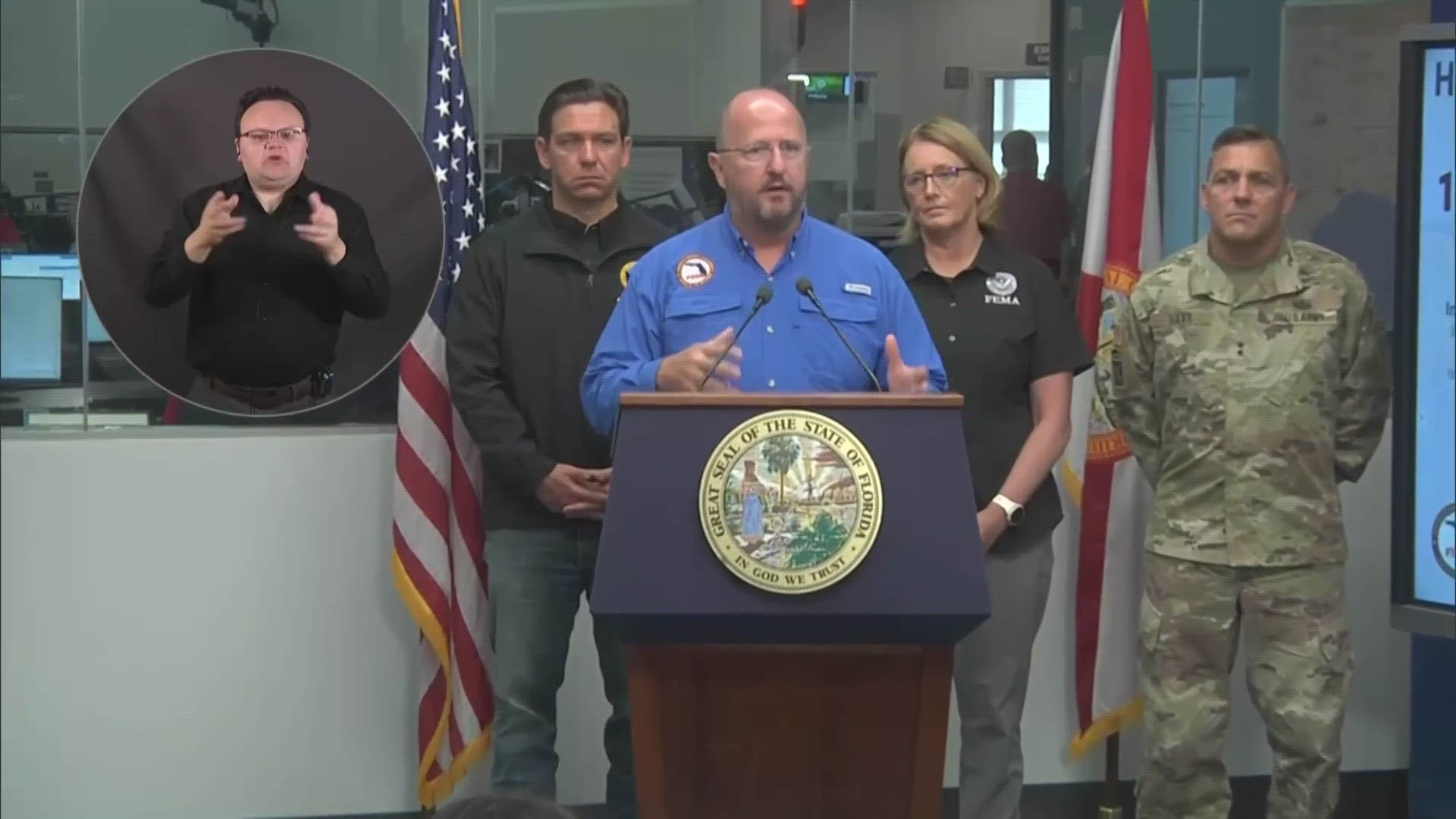JACKSONVILLE, Fla. — As crews begin to clean up in the aftermath of Hurricane Idalia, Florida officials are empowering residents to stay safe and start the process themselves.
Florida Division of Emergency Management Executive Director Kevin Guthrie took to the podium during a press conference held in Tallahassee Thursday morning to provide guidance on what to do after the storm.
"It will help your local government immensely if you separate debris," he said. "Put it on the side of the roadway - not on the roadway."
What to do with your debris
Guthrie said it is important to leave different piles of debris for crews to pick up, adding some items are safer to move than others.
Here are the five separate piles:
- Interior debris
- Wet materials
- Vegetation
- Appliances
- Household hazardous waste
Interior debris includes large items from inside the home including sofas, damaged furniture, and etc. Wet materials such as carpets, rugs and such should go in a separate pile and be removed from one's home.
Vegetation, whether spoiled food or ruined gardens, should also be separated from other debris. This waste can be tossed away differently.
People should be careful about removing damaged appliances that were connected to electricity. This could be fans, refrigerators and TVs that were ruined during the storm. Keep them away from wet material and if it's safe, remove them from the home.
Household cleaning items like bleach and other supplies, could have become more hazardous after the storm. If paint cans, sprays and other chemicals have water or heat damage, take precautions and remove them from the home.
Of course, sanitize hands and the home if possible after touching such debris, Guthrie said.
How to handle water damage
Stay out of flood waters.
Guthrie emphasized that steering clear of water, if possible, is one way to stay healthy.
"You don't want to be walking around brackish water," he said.
The emergency management official advised that residents also take photos of water damage, especially watermarks showing how high it rose.
"Go six inches above the line," he said about taking photos of interior and exterior watermarks.
Taking photos from a few steps back and capturing the water level rise with extra space can give perspective and fall within insurance company guidelines and organizations that may assist with flood damage.
For those who are experiencing immense flood damage, Guthrie advised shutting off the home's electricity and wearing appropriate clothing that covers most of the body out of an abundance of caution.
More information on how to deal with mucking and gutting can be found here.
Beware of scams after Idalia
"After disasters, scammers often attempt to take advantage of survivors," Guthrie warned.
He encouraged those impacted by Idalia, to be vigilant and to report suspicious activity, including price gouging to the Attorney General's Office.
People who believe they've fallen victim to price gouging can call Florida's hotline at 1-866-966-7226.
How to help after Hurricane Idalia
The easiest way to help is to make a contribution to Florida Disaster Fund, according to Gov. Ron DeSantis.
It is the state's private fund established to help Florida communities respond and recover from emergencies. VISA is waiving all interchange fees associated with Hurricane Idalia donations.
People can click here to make a contribution. They will be redirected to volunteerflorida.org. People can also donate by texting disaster to 20222 to donate $10.
Anyone with questions can contact Volunteer Florida at 850-414-7400 or email info@volunteerflorida.org.

